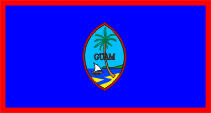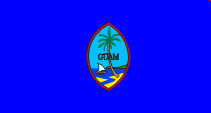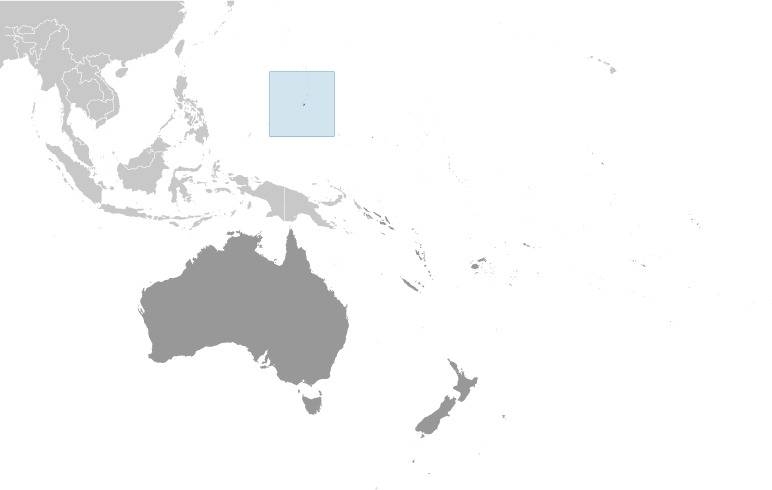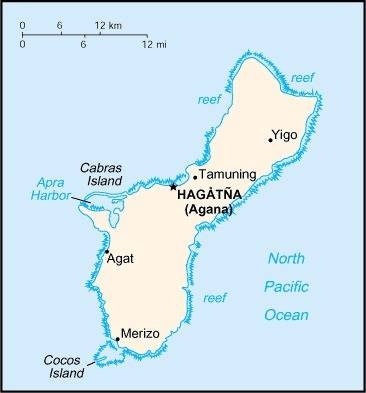mobile View, to the German Version tap the flag


- Territory of Guam
- possession of the USA
- own name: Guåhån
• Flag
• Historical Flag
• Meaning/Origin of the Flag
• Coat of Arms
• Meaning/Origin of the Coat of Arms
• Map
• Numbers and Facts
• History
• Origin of the Country's Name

National flag,
ratio = 22:41,
Source, by:
Wikipedia (D)







1917–1960,
National flag,
ratio = 22:41,
Source, by:
Wikipedia (D)




The flag of Guam was introduced in 1917 by the then acting Governor, but was officially adopted not until 1948. It is dark blue and shows the seal of the island in the middle. Since 1960 it is surrounded by a narrow red border. The blue stands for the Pacific the red edge for the blood which was given by the Chamorro. The flag may only be hoisted next to the flag of the USA.
Source:
Wikipedia (D)


Coat of arms (seal) of Guam,
Source: Corel Draw 4

The seal of Guam is a red-bordered, pointed, vertical ellipse containing a beach scene: the mouth of the Agana River close to the capital, furthermore an outrigger canoe with a sail, a palm tree, and the word "GUAM" superimposed in bold red letters. The seal was – like the flag – introduced in 1917, but was officially adoped not until the year 1930.
Source:
Wikipedia (D)

Location:

Source: CIA World Factbook
Map of the country:

Source: CIA World Factbook

Area: 210 square miles
Inhabitants: 162.742 (2016), thereof 35% Chamorro (half-casted Filipino-Spanish-American), 25% Filipino, 10% Micronesians, 30% US-soldiers
Religions: 85% Roman Catholic
Density of Population: 773 inh./sq.mi.
Capital: San Ignacio de Agaña (since 1998 Hagåtña), ca. 1 000 inh.
official Language: English
other Languages: Chamorro
Currency: 1 US-Dollar (US$) = 100 Cents
Time Zone: GMT + 10 h
Source: Wikipedia (DE)

ca. 2000 B.C. · settlement of the island from the east/southeast direction
1521 · the Portuguese sailor Magellan discovers the island
1526 · the Spanish navigator Loaisa visits the island
1565 · Miguel López de Legazpi takes Guam in possession for Spain
1668 · Jesuits begin to Christianize the island, the entire Spanish Ladrones Archipelago is renamed by them to Mariana Islands after Marianne of Austria, the widow of Spain's King Philip IV.
1898 · in result of the Spanish-US-American war take over by the USA
1941–1944 · occupied by Japan
1950 · granting of internal self government
Source: Wikipedia (D),
Discovery '97

The name "Guam" goes back to the language of the Chamorro, the inhabitants of the island. In this, "Guahan" or "Guajan" means "what we have".
Source:
Etymology Dictionary 2014


![]()








